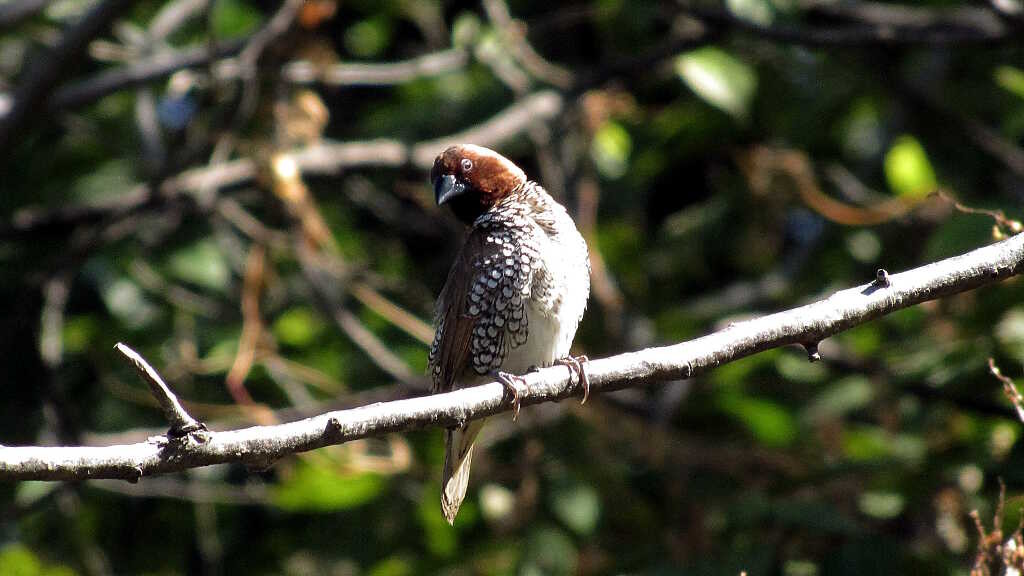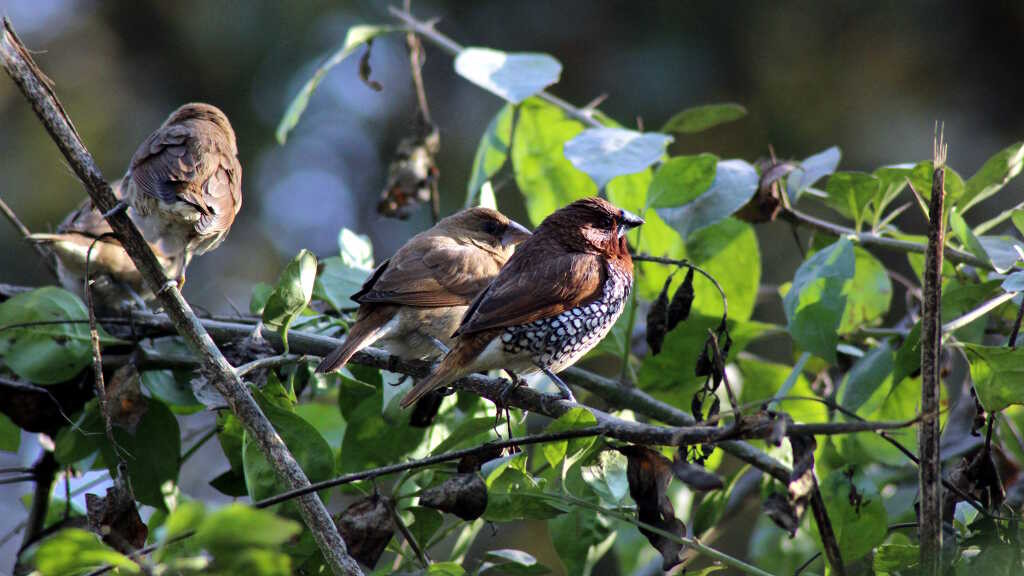
Lonchura punctulata ( Scaly-breasted munia)
The scaly-breasted munia, scientifically known as Lonchura punctulata, is a small, seed-eating bird frequently seen in the lower elevations of the Great Himalayan National Park (GHNP) and surrounding areas. Recognised for its beautiful plumage, this bird exhibits a brown upper body and a white underbody covered in dark, scale-like markings, giving it its characteristic name.
Habitat and Distribution
In the context of GHNP, the scaly-breasted munia is more commonly observed near human settlements, agricultural fields, and grassy forest edges rather than deep forest interiors. They thrive in open areas and secondary growth zones at lower altitudes. While GHNP is predominantly a forested high-altitude park, the buffer zones and river valleys such as Tirthan and Sainj provide a favorable environment for these birds, especially where grasses and grains are abundant.
| Common name | Scaly-breasted Munia |
| Scientific name | Lonchura punctulata |
| Family | Estrildidae |
| Description | It is a widespread resident bird of Himalayas. Adult has chestnut throat and upper breast, and whitish underparts with dark scaling. Juvenile has brown upperparts and buffish underparts. The bill is black in colour. It is commonly found in an altitude of 2400m and prefers open forest, bushes & cultivation for their living. |
Behavior and Diet
The scaly-breasted munia is highly social, often moving in small flocks. It feeds primarily on grass seeds and occasionally on small insects. Its strong conical beak is perfectly adapted for cracking hard seeds. Munias are known for their swift, undulating flight patterns and gentle chirping calls. They are also noted for communal roosting and breeding behaviors.
Conservation Status
Though not considered threatened, the scaly-breasted munia benefits indirectly from the habitat protection provided by GHNP’s conservation efforts. While their main habitats lie just outside dense forest areas, preserving the buffer zones around the park is essential for the continued presence of this species in the region.




